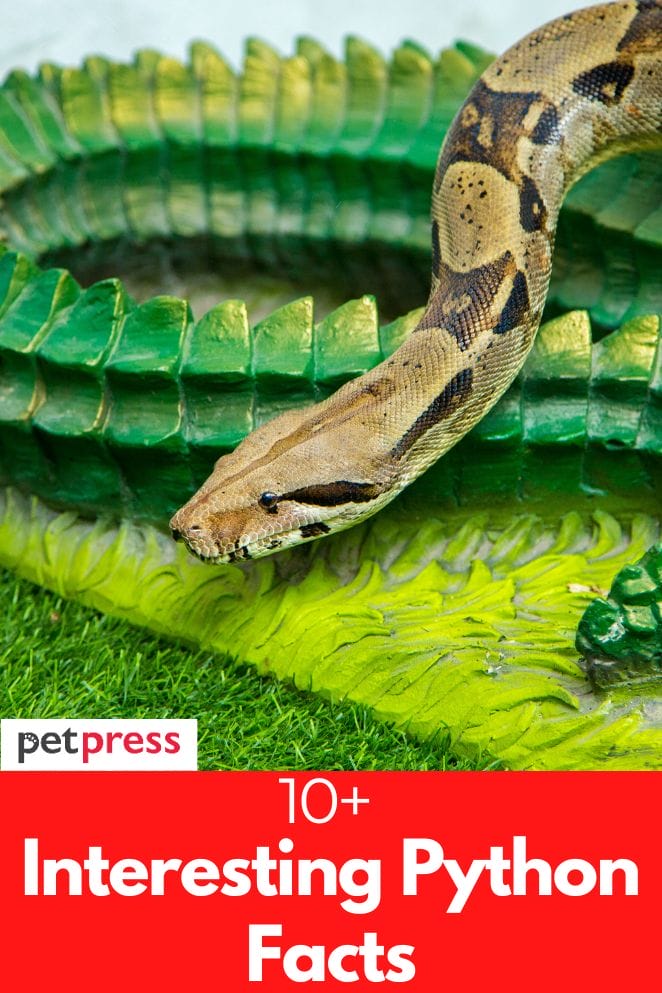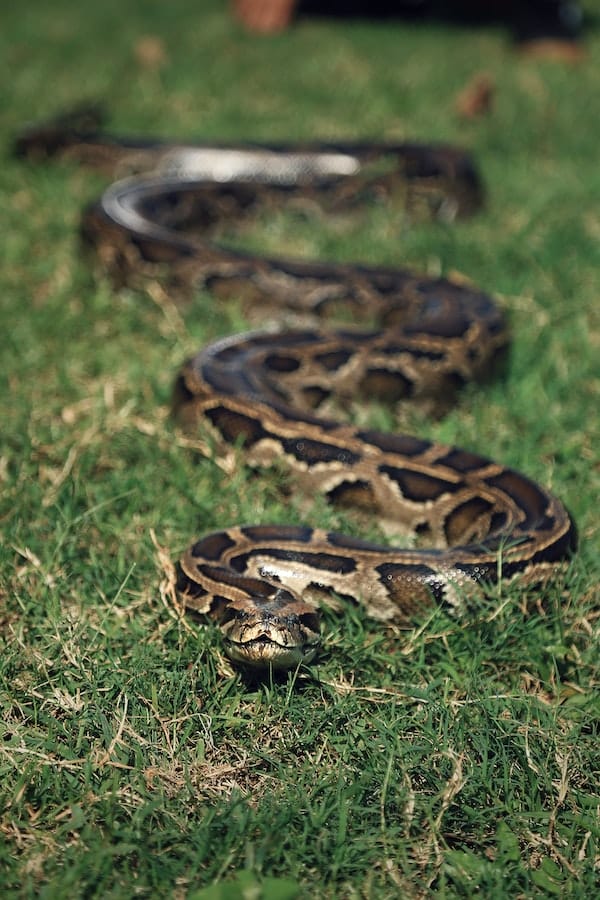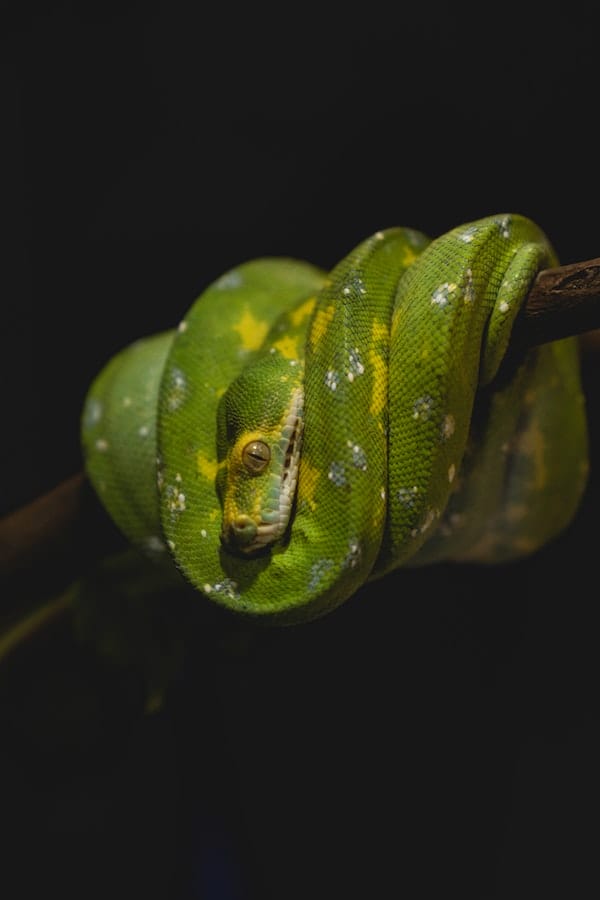
The python snake is one of the fascinating creatures on Earth.
These slithering serpents are found in a variety of habitats across the world and have several amazing characteristics that make them stand out from other animals.
This article will highlight some exciting facts about pythons that you may not already know.
From their diets to their unique anatomy, pythons are truly amazing creatures.
Fact #1: Pythons Can Grow to Over 20 Feet Long
One of the most incredible facts about pythons is their size.
The largest species, the reticulated python, can grow to over 20 feet in length and weigh up to 250 pounds!
This makes them one of the longest snakes on earth.
Despite their massive size, they are surprisingly agile and can move quickly through dense forests or across open plains.
In addition, their ability to climb trees and swim makes them formidable predators on land or water. Pythons have an impressive life span as well, with some living up to 25 years in the wild.
Fact #2: Pythons Have Heat-Sensitive Eyes
Pythons have some unique eyesight adaptations that make them particularly effective hunters.
Unlike most animals, pythons have heat-sensitive organs at the top of their heads called pit organs.
These organs allow the snake to detect small changes in temperature, allowing it to pick up on warm-blooded prey from a distance.
This makes them especially adept at hunting small mammals, birds, and reptiles.
In addition to these organs, pythons also have a set of eyes on the top of their head that can detect movement in low light conditions.
Combined with their amazing sense of smell, this makes pythons incredibly efficient hunters.
Fact #3: Pythons Eat Their Prey Whole

One of the fascinating facts about pythons is their eating habits. These snakes are not venomous, so they kill their prey by constriction.
This means they wrap their bodies around their victim and squeeze until it suffocates.
Once the prey dies, the python will unhinge its jaw and swallow the animal whole.
This process can take hours, but pythons are patient hunters who wait for their meal to digest before moving on.
Fact #4: Pythons Give Birth to Live Young
Unlike most reptiles, python snakes don’t lay eggs.
Instead, they give birth to live young. Python mothers will typically have a litter of 15-30 baby pythons at once.
The babies will be entirely independent from the start and can hunt for themselves almost immediately after birth.
Female pythons are also highly protective of their young and will aggressively defend them from potential predators.
Fact #5: Pythons Are Found in a Wide Range of Habitats
Pythons are found in a wide variety of habitats across the globe.
The reticulated python, for example, is native to Southeast Asia and can be found in rainforests, woodlands, and even cities.
The Burmese python is found in South Asia, while the African rock python can be found in sub-Saharan Africa.
Pythons are also popular pets and can be kept in captivity in almost any climate. No matter where you look, pythons are sure to have adapted and made themselves at home!
Fact #6: Pythons Have Unique Anatomy
Pythons are fascinating creatures, and their anatomy is no exception.
One of the most notable features of pythons is their heat-sensing pits. These pits are located on the snake’s head and allow it to detect small changes in temperature.
This helps it locate its prey from a distance.
Pythons also have an impressive set of eyes that allow them to see in low light conditions, giving them the advantage when hunting at night.
In addition, pythons have strong muscles and flexible jaws that give them the power to constrict their prey with ease.
These anatomical features make pythons formidable predators!
- Related post: Uncovering The Interesting Snake Facts
- Related post: Best Python Tattoo Design Ideas
Fact #7: Pythons Are Non-Venomous

Pythons are non-venomous snakes, which means they have no way of injecting venom into their prey.
Instead, they rely on constriction to subdue and kill their victims. This method is incredibly effective and allows the python to overpower even larger animals.
Pythons also have powerful jaws that allow them to swallow their prey whole, giving them a unique hunting advantage.
The lack of venomous glands makes pythons safe around humans, making them popular exotic pets!
Fact #8: Pythons Live in Social Groups
Despite their individualistic nature, pythons are social creatures and can live in groups.
These social groups provide an environment for the snakes to share resources and even protect each other from potential predators.
The social behavior of python snakes is most commonly observed during the breeding season when multiple males congregate around a single female.
This behavior ensures that the male with the strongest genes will be able to mate with the female and pass on his desirable traits to their offspring.
Pythons are truly fascinating creatures!
Fact #9: Pythons Are Intelligent
Pythons are surprisingly intelligent creatures that have been known to exhibit a variety of complex behaviors.
They are capable of learning from their environment and adapting to new situations quickly.
Pythons also possess impressive problem-solving skills, allowing them to outwit potential predators and easily capture prey.
This intelligence makes pythons an intriguing species to observe in the wild.
Fact #10: Pythons Are at Risk of Extinction
Unfortunately, the python species is in danger of extinction due to various factors. These include habitat destruction, poaching, and over-collection for the pet trade industry.
The reticulated python, for example, is listed as vulnerable on the IUCN Red List and is facing a rapid population decline.
It is important to take steps to protect pythons and their habitats, ensuring that these incredible creatures remain part of our planet’s biodiversity.
Fact #11: Pythons Are a Symbol of Power

In many cultures, pythons are seen as symbols of power and strength. This is largely due to their impressive size and ability to constrict their prey with ease.
In some African cultures, the python is associated with rain, fertility, and wealth. In Hindu mythology, pythons are seen as sacred creatures and are often depicted as powerful deities.
The symbolic power of the python has been celebrated throughout history and still holds a special place in many cultures today.
Fact #12: Pythons Can Survive for Long Periods without Food
Pythons can survive for long periods without food due to their efficient metabolism. This adaptation allows them to live in environments where food is scarce.
In the wild, pythons typically only eat when they can find prey.
However, they can go for months at a time without eating and can even survive up to 2 years without food in extreme cases.
This ability is a key factor in the success of the python species.
Fact #13: Pythons Shed Their Skin Regularly
Pythons shed their skin regularly, typically every 2 to 3 months.
During the shedding process, the snake’s eyes become cloudy and it begins to rub its body against rough surfaces to remove its old skin.
After shedding its old skin, the python is left with a new layer of bright and vibrant scales. This adaptation helps the snake get rid of any parasites and allows it to grow in size.
It is a fantastic process that is essential for the health and well-being of these fascinating reptiles!
Overall, pythons are an intriguing species with many fascinating adaptations.
From their intelligence and problem-solving skills to their ability to survive without food for long periods, these snakes have a lot to offer.
We must take steps to protect their habitats and ensure that they remain part of our planet’s biodiversity for years to come!


GIPHY App Key not set. Please check settings